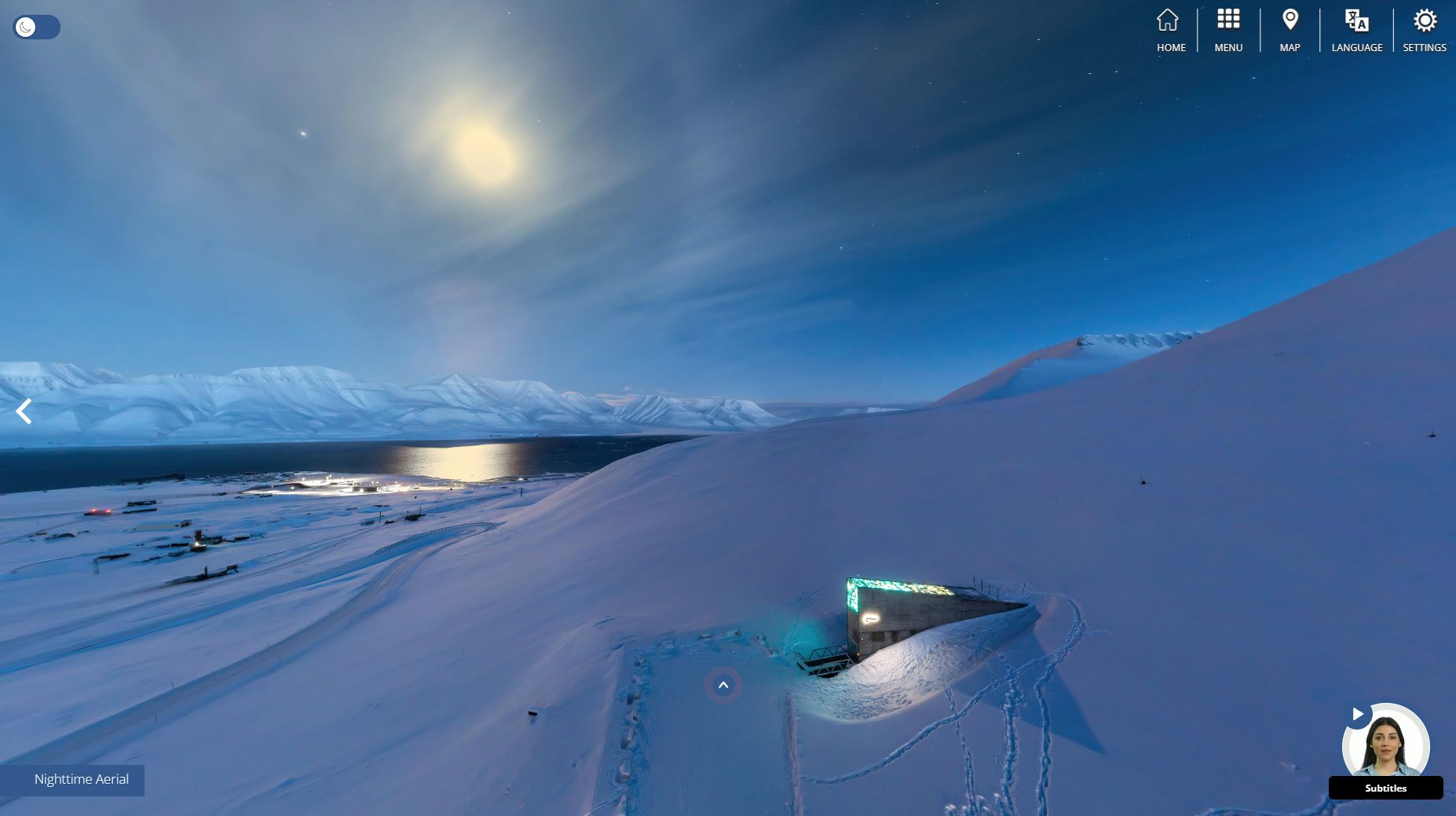Svalbard Global Seed Vault Virtual Tour
Seed vaults aren't new, but the Svalbard Global Seed Vault takes them to a completely different level. Take a virtual tour to learn how countries are storing seeds to protect against species loss.

Global Seed Depository
Countries around the world maintain seed depositories. The facilities store backup samples of native plants, rare species, and food sources as a hedge against gradual and catastrophic plant failures.
In an effort to add a belt to these suspenders, Norway built and manages the Svalbard Global Seed Vault, sharing operating costs with the Crop Trust. According to Wikipedia:
The Svalbard Global Seed Vault (Norwegian: Svalbard globale frøhvelv) is a secure backup facility for the world's crop diversity on the Norwegian island of Spitsbergen in the remote Arctic Svalbard archipelago. The Seed Vault provides long-term storage of duplicates of seeds conserved in genebanks around the world. This provides security of the world's food supply against the loss of seeds in genebanks due to mismanagement, accident, equipment failures, funding cuts, war, sabotage, disease and natural disasters. The Seed Vault is managed under terms spelled out in a tripartite agreement among the Norwegian government, the Crop Trust, and the Nordic Genetic Resource Center (NordGen).
The Norwegian government entirely funded the Seed Vault's approximately 45 million kr (US$8.8 million in 2008) construction cost. Norway and the Crop Trust pay for operational costs. Storing seeds in the vault is free to depositors.
Since you can't just show up and take a tour of this remarkable facility, the Vault created a virtual tour. For those of you who have played the computer game Myst, the navigation is quite similar. It doesn't have the ethereal music of the video game, but it's quite relaxing.
How many samples are in the Vault?
I'm glad you asked that question. When the facility opened in 2008, it housed 320,549 different seed samples. By 2021, the number climbed to 1,125,419. Lest you worry the Vault will run out of space, you can relax as the current capacity is 4,500,000 samples.
How do they preserve the seeds?
_Seed_Box_for_Svalbard_Safe_Storage_(2007)_(cropped)_optimize.jpg)
Original samples were stored in glass tubes (above). No issues of breakage, right? Over the years, the packaging technique evolved to hermetically sealed aluminum bags. Each bag holds up to 500 seeds. Unlike the seed packets we buy at the garden center, these seeds will remain viable for a long, long time.

Who owns the seeds?
The Vault functions like a bank safety deposit box system. Norway and its partners own and operate the facility and ensure security. The depositors own the seeds, and only designated, pre-approved organizations can withdraw the seeds.
Take the tour!
It's a fascinating concept, facility, and tour. Give it a look when you have a few minutes; you'll enjoy the exercise.
